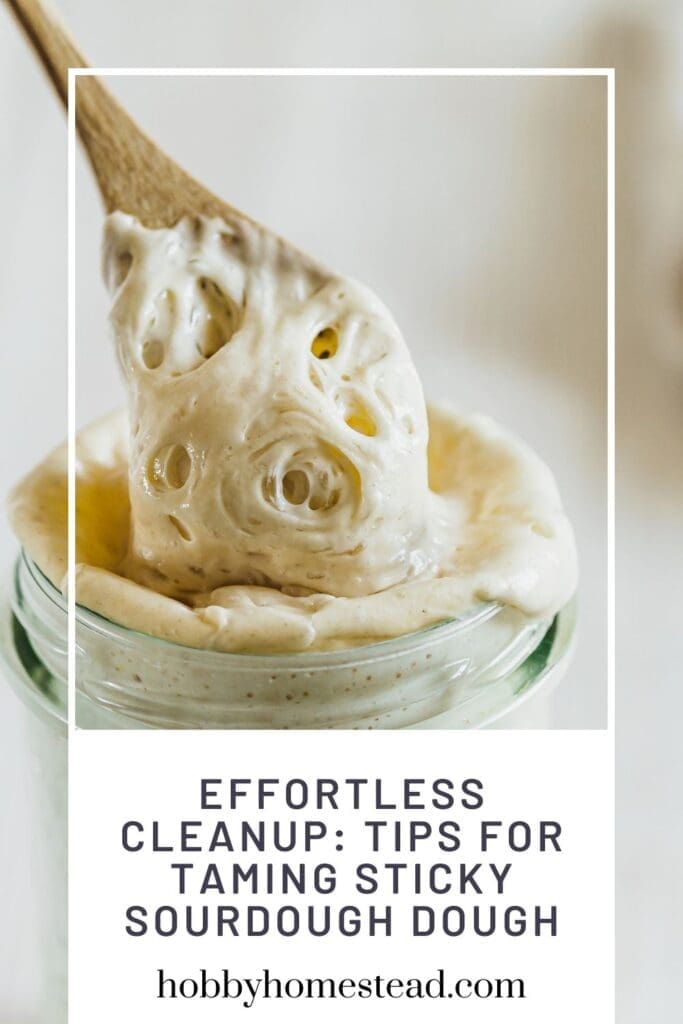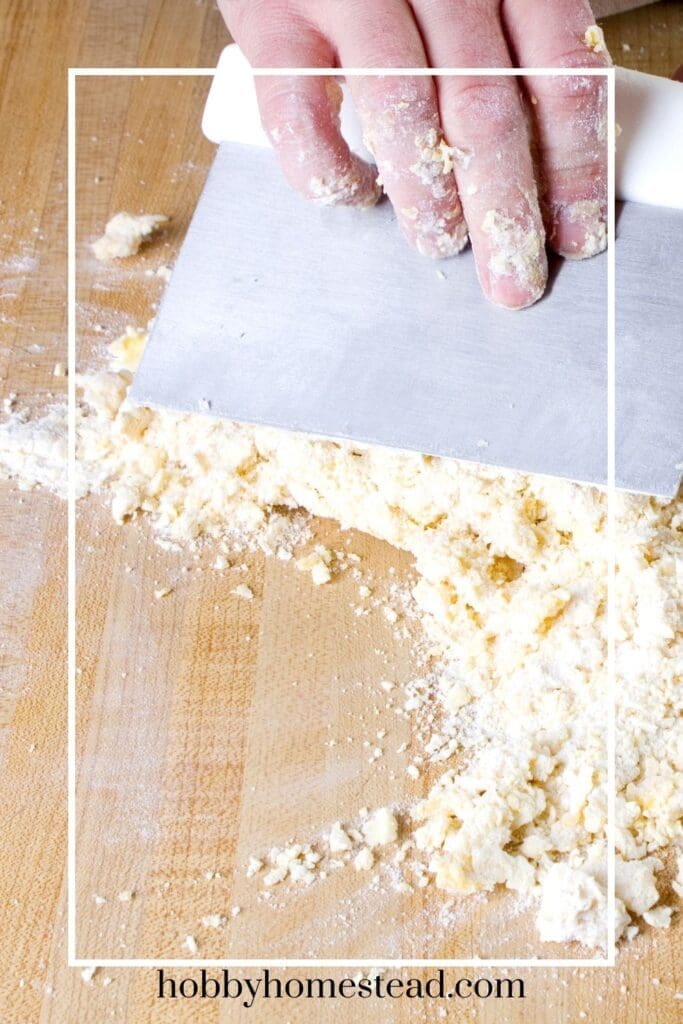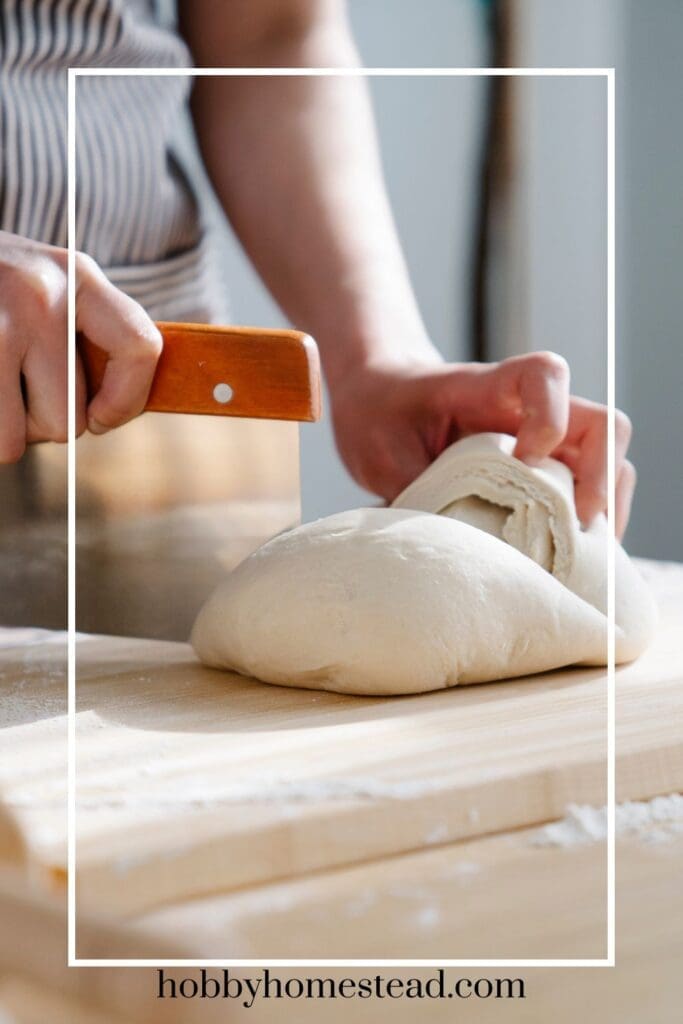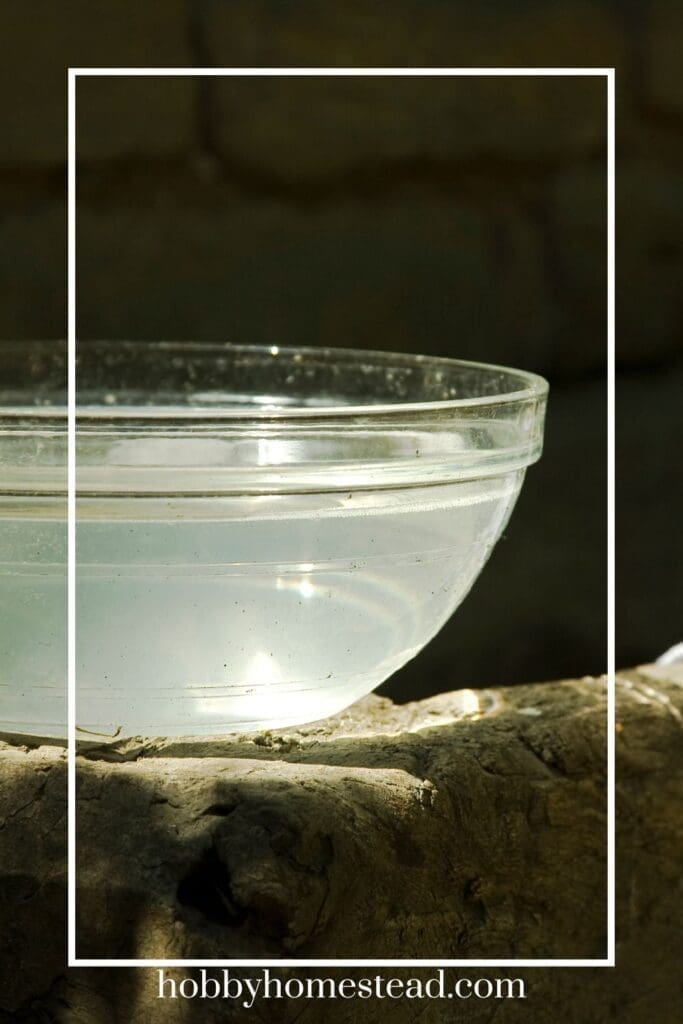Is there such a thing as effortless cleanup for bread making? If you’ve ever baked sourdough bread, you know that sticky bread dough has a way of clinging to every surface it touches. From bits of dough stuck in your large mixing bowl to stubborn residue in your starter jar, cleaning up can feel like the hardest part of the process.
For busy moms and homesteaders alike, finding the best way to keep your kitchen tidy while working with sourdough is essential. With a few simple sourdough hacks, you can make cleanup almost as satisfying as pulling a golden loaf out of the oven.
Sourdough Mess! Does it Make you Wonder Why You Want to Make Your Own Bread?
In general, if you plan ahead and use a few simple tips, you’ll enjoy making your own bread in no time.
A dough scraper is invaluable for clearing excess dough from your work surface or large mixing bowl before it hardens.
For cleaning your sourdough starter jar, a quick rinse with cool water, before the starter dries, goes a long way. Hot water may seem like a good idea, but it can cause sticky bits of dough to cling even more. Instead, try soaking tools in a bowl of cold water with a splash of white vinegar to loosen stubborn residue.

Table of contents
Effortless Cleanup: Tips for Taming Sticky Sourdough Dough
To minimize waste, scrape leftover bread dough into your garbage bin and use parchment paper during bulk fermentation to prevent sticking.
Rice flour or dry flour dusted on your work surface is a lifesaver for preventing sticky mishaps while shaping loaves. When you’re done, wash everything in hot soapy water for a fresh finish.
Let’s start with protecting your clothing from sticky dough.
To protect your clothing while working with dough, here are a few effective strategies.
Wear an Apron
A well-fitted apron is one of the best ways to protect your clothes from flour, water, and sticky dough. Choose one that’s long enough to cover your chest and full torso. A heavy-duty, washable apron will help absorb spills and splatters and can be easily thrown in the wash afterward.
Use an Old Shirt or Towel
If you don’t have an apron, wearing an old shirt or covering your clothing with a clean towel can offer similar protection. Opt for something you don’t mind getting messy.
Roll Up Sleeves
If you’re working with dough, especially during kneading or folding, rolling up your sleeves prevents them from dragging in the dough or getting flour all over them. This also gives you more freedom of movement while handling the dough.
Keep a Damp Cloth Nearby
For quick wipe-ups or if you get a little flour or dough on yourself, keep a damp cloth nearby. It’s much easier to clean small spots while they’re still fresh rather than letting them dry and set.
Wear Gloves
Disposable gloves can be a good option to keep your hands clean and reduce the chance of transferring dough or flour onto your clothes. While it’s less common to wear gloves for dough work, it can be particularly helpful when handling very sticky dough.
By using an apron, rolling up sleeves, and having a towel or cloth nearby, you can keep your clothes much cleaner while enjoying your dough-making process.
Tips for Easy Sourdough Cleanup
With these best Tips for Taming Sticky Sourdough Dough, you can enjoy your sourdough journey—starter and all—without the cleanup stress.
Plan Your Workspace
Set up a designated dough area near the kitchen sink so you can quickly handle any sticky situations. Having a garbage bin nearby for excess dough is also helpful.
Start with the Right Size Jar
It can be exciting when the sourdough starter finally starts growing. Yet, it can be a big mess to clean up if it bubbles out of the top. So, make sure that you are using a jar large enough to handle the ingredients and their expansion as your live cultures begin to grow.
I recommend using a jar that’s about 3 to 4 times larger than your initial starter. That way it has plenty of room to grow.

Start with the Right Tools
Use a Pastry Scraper
A pastry scraper is a must-have tool for any baker. It’s perfect for dividing dough and practically essential for cleaning up your work surface.
To make cleanup effortless, hold your garbage bin under the counter edge and scrape excess flour and sticky dough bits directly into it. This keeps your rags and scrubbers dough-free.
With a good pastry scraper, your work surface will be so clean that a quick wipe with a damp rag is all you’ll need to finish up. If you don’t have one yet, it’s worth adding to your baking toolkit.
Use a Chopstick
It is so easy to mix the ingredients when feeding your starter. You can get a disposable one or a stainless steel one. It’s easy to wipe clean with a paper towel afterward, reducing mess. A chopstick is a simple and quick option.
Silicone Mats
It is so easy to shape the dough on these mats. And the best part is the cleanup. Once you’ve finished, just the mat up and empty the excess flour into the bin.
Keep a Dough Scraper Handy
A dough scraper is the best tool for removing excess dough from countertops, bowls, and tools. Scrape as much as possible before washing to make cleaning quicker.
Effortless Cleanup Tips
Use Cool Water First
Before reaching for hot soapy water, give tools like dough scrapers, mixing bowls, and your sourdough starter jar a quick rinse with cool water. This helps prevent sticky dough from setting and clinging to surfaces.
Soak in Cold Water with Vinegar
For stubborn bits of dough, soak your utensils and bowls in a bowl of cold water with a splash of white vinegar. This natural solution breaks down sticky residue without harsh chemicals.
Line with Parchment Paper
Use parchment paper during bulk fermentation or when shaping loaves to keep sticky dough off surfaces and make cleanup effortless.
Along with reducing the mess, it helps me move the bread loaf where I want it easily. Just by tugging on the paper, you can move the loaf around the baking stone, Dutch oven, or other baking pan.
Dust with Rice Flour or Dry Flour
Rice flour or dry flour on your countertop or proofing basket prevents dough from sticking during shaping, making both the baking and cleanup process easier.
Prevent Sticking in the Starter Jar
To avoid sticky buildup in your sourdough starter jar, transfer your starter into a clean jar at room temperature every week or two. A tight-fitting lid keeps things tidy and reduces mess.
Keeping your starter jar clean might feel like a chore, but regular maintenance makes the process much easier and prevents dealing with tough, concrete-like build-up. Consistently washing your container also helps prevent bad bacteria or mold from forming in the dried crust around the lid or jar rim.
To stay on top of it, I transfer my starter to a fresh container and thoroughly wash the old one about once a week or after every other bake. This simple routine keeps everything fresh and ensures a healthy sourdough starter.
Wipe Surfaces Immediately
Using a paper towel or onion bags, wipe down work surfaces before the dough dries. Bits of dough are much easier to clean when fresh.
Plastic Bags for Dough
Plastic bags are convenient, but a one-time use. The dough sticks to them, so you’ll need to squish the dough out the top of the bag.
Plastic bags or stand-up pouches can be a convenient option for specific uses in sourdough baking, such as:
- Sharing Starter with Friends. Sending starter in a bag ensures no containers need to be returned. It’s a tidy, hassle-free solution for sharing the joy of sourdough.
- Storing Starter in the Fridge. For long-term storage, a sealed plastic bag can prevent dried, crusty bits from forming on the container. When ready to revive, simply cut the corner of the bag, squeeze out the starter, and discard the bag.
Clean as You Go
For busy homesteaders, cleaning as you work is a great way to stay ahead of the mess. A quick rinse of tools right after use saves time and effort later. Don’t let the sourdough harden. It is much easier to clean right away.
Use Fresh Flour to Dust Hands
Dusting your hands with fresh flour when handling sticky dough can prevent it from sticking to your skin and reduce the need for constant handwashing.
Disposable Gloves for Mixing
Using a disposable glove can make mixing dough a much cleaner and easier process. You only need one glove, and it can be reused during your bake. After mixing the dough, simply set the glove aside and use it again for tasks like incorporating salt after the autolyze, handling the first sticky fold, or adding extra water during double hydration. This simple trick helps keep your hands clean while managing the stickiest steps of sourdough baking.

Chill Dough Before Shaping
Placing your dough bowl or container in the fridge for about an hour before shaping can make a world of difference. Chilling the dough reduces stickiness, making it much easier to handle. This simple step minimizes the amount of dough that clings to your hands and work surface, saving you time and effort during cleanup.
Brush Out the Banneton
Use the banneton, not the liner. If you have a banneton for proofing sourdough, you know that they include a cloth liner. Skip the liner with the sourdough. They are just another thing to wash and dry.
Instead, try dusting your banneton with a little flour. It helps the bread easily pop out.
To clean your banneton, use a dry plastic bristle brush to remove excess flour. You can save the flour for future use by transferring it to a tub and allowing it to dry completely with the lid off.
After brushing, gently tap the banneton against the edge of your garbage bin to dislodge any remaining flour. Then, place the banneton near your still-warm oven to dry fully before stacking and storing it.
Keeping your banneton dry is crucial to prevent mold, and removing excess flour helps prevent it from scattering in your cabinets or on the floor during use.
With these sourdough hacks and tips, you’ll have more time to enjoy baking—and eating—your delicious homemade bread without worrying about the mess.
Don’t Use a Kitchen Sponge with Sourdough
The flour and water just creates a sticky and gluey mess on the sponge. It’s so hard to get the sponge clean after this. I would often end up throwing mine away. Which is not very eco-friendly.
Make sure that the counters have been scraped first before even using a dish cloth to clean.

Don’t Pour Sourdough Starter Down the Drain
This is a tip you’ve probably heard before, but it’s worth repeating: never pour sourdough starter down the drain. Think back to when you made paste in school with flour and water—sourdough starter behaves in much the same way.
Over time, it can build up and clog your drain, leading to a messy and costly plumbing problem. Always dispose of your starter in the compost or trash instead.
Think Twice Before Using the Dishwasher for Cleaning
Remember, the hot water will set the sourdough starter like cement, and it becomes nearly impossible to get your utensils and bowls clean.
So, if you’re going to use the dishwasher, make sure to scrap and wipe them with paper towels. Also, let them soak in cold water to remove most of the debris first.
Does sourdough cause problems with water pipes and septic?
Yes, sourdough can potentially cause problems with water pipes and septic systems if it isn’t handled carefully. Here’s why and how to mitigate those issues:
Why Sourdough Can Be a Problem
Sticky Residue in Pipes
Sourdough dough and starter are both very sticky. When washed down the drain, the sticky bits can adhere to the inside of pipes, catching other debris and leading to blockages over time.
Expansion in Septic Systems
Sourdough starter contains live yeast and bacteria that can ferment and expand. If large amounts are disposed of down the drain, the starter could continue fermenting in the septic tank, disrupting its balance.
Clogs from Dough
Even small bits of bread dough that seem harmless can build up in pipes, especially if they aren’t washed away thoroughly with sufficient water.
Strain on Septic Systems
Septic systems rely on a delicate balance of bacteria to break down waste. Introducing too much organic matter like sourdough starter can overwhelm the system.
Tips to Avoid Plumbing and Septic Issues
Scrape Before Washing
Always scrape excess dough or starter into the garbage bin or compost bin before rinsing bowls or utensils.
Use a Sink Strainer
Install a sink strainer to catch any remaining bits of dough or starter before they go down the drain.
Dispose of Large Amounts Responsibly
If you need to discard sourdough starter, compost it or add it to your garden soil instead of pouring it down the drain. It can enrich the soil and reduce waste.
Rinse with Plenty of Water
When washing utensils and bowls, use a strong stream of hot water to flush away any small remnants, ensuring they don’t stick to pipes.
Avoid Regular Disposal into Septic
Minimize the amount of sourdough starter or dough washed into septic systems to avoid disrupting the bacterial balance.
Use White Vinegar for Cleaning
Rinse pipes occasionally with hot water and white vinegar to help break down organic residue and reduce buildup.
By taking these precautions, you can enjoy your sourdough baking while protecting your pipes and septic system from unnecessary wear and tear.
What are some good uses for the soaking water from washing the sourdough?
The soaking and cleaning water from washing sourdough tools and bowls can be repurposed in several eco-friendly and practical ways. Here are some great ideas for using that water instead of letting it go to waste:
Compost Boost
Pour the water into your compost bin or pile. The tiny bits of dough and sourdough starter are rich in organic material and can contribute to the decomposition process, providing a small boost to your compost.
Garden Fertilizer
Use the water to water your garden or indoor plants. The yeast and bacteria remnants in sourdough starter are organic and can add a small amount of nutrients to the soil. However, avoid pouring it on plants prone to mold or fungus, and dilute the water if it contains soap or vinegar.
Chicken Feed or Feed for Other Animals
If you have backyard chickens, the water can be added to their feed. Chickens often enjoy the mild yeasty flavor and will happily peck at any small dough bits mixed into their mash. Tip. Make sure it is just the soaking and cleaning liquid without any dish soap in it.
The water can be given to pigs or other livestock that enjoy fermented foods. It’s a great way to provide enrichment and minimize waste.
Things to Avoid
Don’t use soapy or vinegar-infused water directly on plants or in compost unless heavily diluted, as it might harm sensitive roots or disrupt soil pH.
Avoid stagnant water that has been left sitting for too long as it could grow bacteria or mold.
These uses help reduce waste and align well with a homesteading and zero-waste lifestyle.
References
Food and Wine. How to Clean Up Dough After Baking
Turner Farm. STOP putting sourdough in your drain! How I properly clean my tools.


